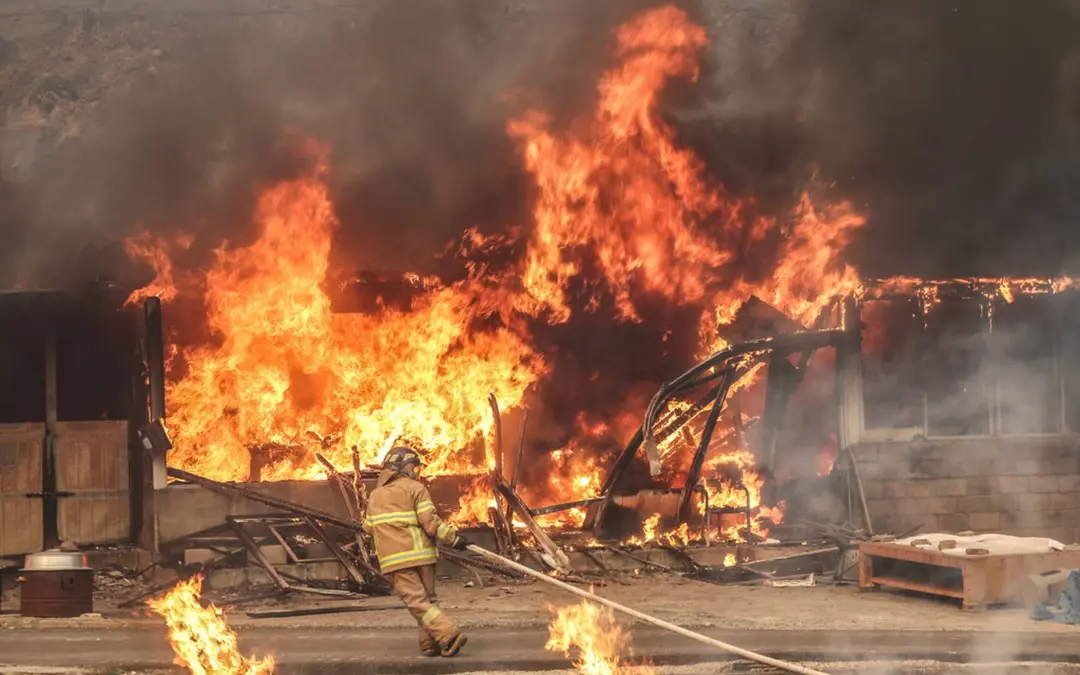South Korea is facing its worst wildfire crisis in history, with at least 24 lives lost and more than 23,000 people forced to flee their homes in the southeastern region. The wildfires, which began in Sancheong County on March 21, have spread rapidly across multiple counties, including Uiseong, Andong, and Yeongyang, fueled by dry conditions and strong winds. The fires have already consumed 17,000 hectares (42,000 acres) of land, marking the third-largest wildfire in terms of area in the country’s history.
Unprecedented Destruction
The fires have wreaked havoc on both lives and cultural heritage. Among the most devastating losses is the destruction of the Gounsa Temple in Uiseong, a 1,300-year-old Buddhist landmark that was reduced to ashes. The temple, which dates back to 618 AD, housed significant cultural relics, though many were successfully moved to safer locations before the flames reached it. This loss has deeply affected the local community. A 68-year-old monk at the temple expressed his sorrow, telling AFP, “We will do our best to restore the function of the temple.”
In addition to cultural damage, the fires have caused extensive harm to local communities, particularly elderly residents. A 30-year-old man from Uiseong shared his grief with AFP, stating, “Both the upstairs and next-door houses were burned down. This area is full of grandparents… when their houses burn down, they have nowhere to go.”
Ongoing Crisis and Emergency Response
South Korean authorities have raised the national fire response level to the highest level, deploying thousands of firefighters and approximately 5,000 military personnel to combat the flames. The US military has also contributed by providing helicopters to assist in firefighting efforts. Tragically, a firefighting helicopter crashed on March 25, killing the pilot. Investigations are underway to determine the cause of the crash.
As of now, the strong winds are continuing to complicate firefighting operations. Acting President Han Duck-soo highlighted the challenge, noting, “We were desperately hoping for rain today or tomorrow to help extinguish the flames,” though the Korea Meteorological Administration forecasts minimal rainfall in the coming days, which offers little hope for significant relief.
The Bigger Picture
The fires have exposed broader environmental concerns in South Korea, which has seen a significant increase in wildfires this year. With 244 wildfires recorded in 2025 alone, more than double the number from the same period in 2024, the nation is grappling with increasingly frequent and severe fire seasons. Experts point to the country’s unusually dry weather as a key factor, with rainfall levels significantly below average.
In response, the government has promised stricter enforcement against illegal burning practices and individual negligence, which are among the primary causes of wildfires.
A Nation in Crisis
While wildfires are relatively rare in South Korea, the current crisis stands as a stark reminder of the dangers posed by climate change and environmental mismanagement. The ongoing devastation continues to challenge emergency responders and local communities alike, as they work tirelessly to contain the flames and recover from the damage.
As authorities vow to restore the affected areas, the full scope of the crisis and its impact on South Korea will continue to unfold. In the meantime, the country’s resilience will be tested as it confronts its worst-ever wildfire disaster.
Sources: BBC News, AFP, Korea Meteorological Administration



